As apps, games and social media continue to grow exponentially, the mental health of our children continues to worsen.
Superscript
RECLAIMING YOUR FAMILY TIME
When I was growing up, our family time was on Sunday. If we were't out exploring the Finger Lakes somewhere, we were holding out for homemade pizza night and movies...together...all doing the same thing... in the same room. Sometimes there were snuggles and other times there was wrestling on the floor but we all knew our parents were into family time on sunday. And we could count on our parents undivided attention. That was typical in the 70's.
Unfortunately, the average parent spends just 3½ minutes per week in meaningful conversation with their children.
Active play has decreased by 70% in recent years as kids prefer to be indoors in front of their devices and screens.
Superscript
Reclaiming Your
Family Time
Family Time
Intentionally Spending Time With Family
Spending time with family is something we all cherish;
but are we really making it a priority?
The good news is, if we are honest about our current habits we can become more intentional in changing them to create the family life we really desire. We can watch our families thrive instead of struggle; making connections instead of growing apart.

You’ve probably noticed that how we spend time with our loved ones has changed pretty drastically in the last few decades. There was a time when families were entertained by board games, music on the radio and just sitting around on the front porch talking to each other. (Yes, even with teenagers!)
By learning what our loved ones love, hate and experience in the day-to-day, we’re showing that they’re more important to us than our outside agendas – and we’ll always take time for them.
The digital age has introduced new ideas about what it means to spend together as a family.
Today, movies and TV have replaced listening to music together (for most families). Games are usually played on a console or a phone; and talking can simply mean a text message from the same room.
And as our attention spans have waned due to our digital conditioning, so has the actual amount of time we spend together versus alone or with others.
Do we really make time for family-
in meaningful ways?
If we’re honest, there is probably a crisis looming, and that is how to spend more time with family than we currently are at the moment.
One study found that American families only spend an average of 37 minutes of quality time together on weekdays.
That’s hardly enough time for a sit-down meal (which is a rarity), much less anything else!

You’ve heard the saying, “Time flies when you’re having fun”. So perhaps we’re spending more time together than we’re reporting. But when we stop to think about it; how often are we really intentional about the time we invest in our families – and HOW that time is spent?
How to Make Spending Time With Family (more) Intentional
The good news is, if we are honest about our current habits we can become more intentional in changing them to create the family life we really desire. We can see our families thrive instead of struggle; make connections instead of growing apart.
We can do so much more than just mark time on the continuum of family life! Our family dynamics can change completely with just a few purposeful actions that show our kids and spouses what they really mean to us.
Here are 3 valuable questions we can ask to evaluate the quantity AND quality of family time together in our homes.

#1. What are their preferences? Find out today!
Do you know each of your children’s favorite foods, favorite colors? What are the names of their friends at school?
Do you know their favorite subjects to study and what are they learning about right now?
What about your spouse, do you know their preferences by heart?
Beyond that- what are their feelings, hopes and dreams? What are they struggling with currently?
Often, our families are telling us these things on a daily basis (either in actions or in words), but we’re too caught up in multi-tasking to really take note of their answers.
We’re answering emails, responding to a text or frantically trying to catch up on housework.
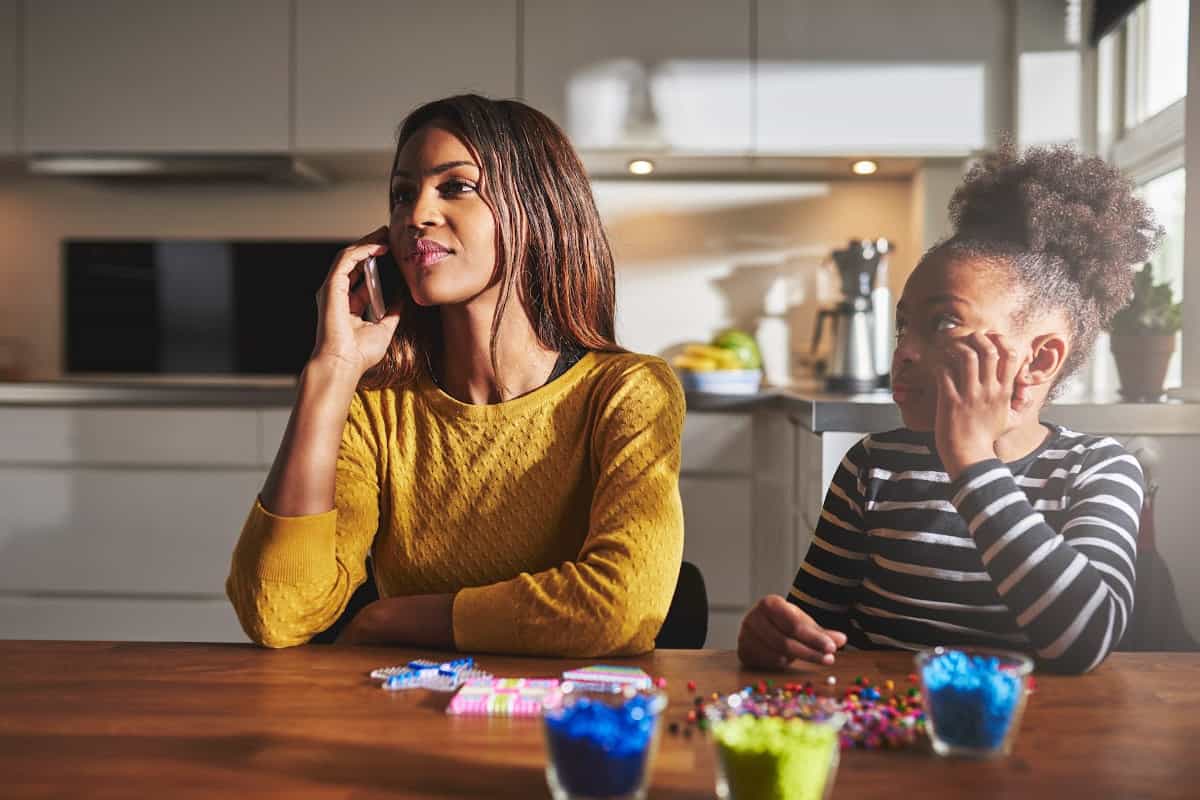
Dropping your habit – to connect
A good example I’ve noticed of this is when I pick my kids up from school, I’m often in a rush to get to the next pickup location, the next appointment, the next errand.
But my kids NEED to tell me about their day in full detail.
This is their way of debriefing and processing their day. My two middle children NEED to go over every item in their backpack right then and really can’t be persuaded otherwise!
If we look at it from their perspective, they’ve been waiting all day to share with us. Our schedules, digital distractions and mental to-do’s are not even on their radar.
So I am slowly learning that it’s best to give them my time first. Put down the phone, stop rushing around.
Unload those backpacks right then and there in the minivan and put everything on hold so we can reconnect in that moment.

Maybe your family’s debriefing process looks different or happens at a much later time in the day. Whenever it is and whatever it looks like, it’s important.
By learning what our loved ones love, hate and experience in the day-to-day, we’re showing that they’re more important to us than our outside agendas – and we’ll always take time for them.
#2. Do they really come to you first? If not-fix that!
Younger kids may not have a choice in this (ha), but especially with older kids who have friends or other adults they look up to, you should pay attention to who they’re confiding in.
Having friends and other respected adults in our kids’ lives isn’t the problem – and it can be a huge blessing, in fact.
But most of us hope that our kids will come to us first with the big questions of life.
We hope to have the chance to mold their values, help them define their belief system and influence their decisions.
So, parents, are they coming to you? Are they asking you questions about life and death, faith, morality?
If you’re not hearing these questions, they’re going to someone else – or somewhere else (hey, Google).
So for anyone asking, Why is it important to spend time with your family? Is family time really that important? This could be most crucial reason, alone.
Because spending time together builds trust, which leads to more honest communication.

YOU make the impact that lasts
The good news? Research has consistently shown that even into the teenage years, parents are the
Sure, our kids may not always act according to this influence, but they will admit they thought about what their parents would approve of – or not – before making big decisions.
For better or worse, we are shaping their idea of what is right and wrong and so much more.
So start those hard conversations. Be the source of wisdom and information that only a loving parent who knows their child’s heart can communicate properly to.
Let them know you’re the open door
– and be willing to listen
– and be willing to listen
For my kids,

Spending time to not only answer their questions but to expand on them and be proactive in teaching values and important truths is something I think we should do every day as parents.
#3. How do they describe you?
I had a real eye-opener one day when my daughter said this to me: “Mom, you don’t spend much time with us anymore. You’re always working and too busy.”
Ouch.
I found that I often use the excuse of having work to do when my kids are trying to connect with me.
Whether it’s housework or work-work that pays the bills, it can be too easy to unbalance the time-scale and spend it on the tasks with more tangible, immediate results.
Read next:
But friends, hitting the pause button on the tasks of life to connect with the people in our lives is so much more important.
We know this, but the habit of busy-ness can be hard to break, for many of us.
Investing in what matters
We simply can’t show our families we love them if we’re not setting aside time that’s just for them.
If we aren’t sure how they feel – just ask your kids how they would describe you and how you spend your time.
Kids are brutally honest!
So whether it’s work, our
And then, plan towards how that time may need to be rearranged for the benefit of our families.
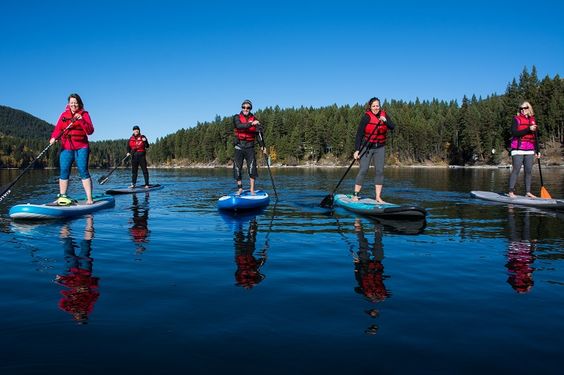
How we spend our family time matters, too
Lastly, don’t forget to do this very important thing: look your kids in the eyes. Look your spouse in the eyes.
As often as you can, think of ways you can spend time together that involves face-to-face interaction.
Need some ideas for how to spend family time?
Here are a few ideas:
Go on a picnic (even in the backyard)
Take the kids on a hike or a park exploration
Cook meals together (let them learn AND do)Take a walk in your neighborhood
Go out for ice cream on a designated day of the week
Visit a museum
Learn a new hobby together (photography, art, a sport, etc)
Volunteer together
Do chores together (it’s amazing how much this can help)
Also, look for opportunities when you’re alone with kids, such as riding in the car to school or appointments. Those pockets of time can be invaluable.
The reality is, kids are losing the ability to appropriately express their feelings in part because even when we ARE together, we’re often in front of a screen.
When we don’t spend enough time talking together, laughing together and even crying together, we are missing out on those moments that really define the family experience.
Read Next:
We’re making a lasting impression, intentionally or not, by the way we allocate our time.
That pie can only be sliced so many ways. What will your family’s memories be made of today?
You might also like:
Excessive screen time can lead to various negative impacts on physical and mental health, including eye strain, sleep disturbances, obesity, anxiety, depression, and reduced cognitive function.
Physical Health Impacts:
Eye Strain:
Prolonged screen use can cause digital eye strain, leading to symptoms like dry eyes, blurred vision, headaches, and neck/shoulder pain.Sleep Problems:
The blue light emitted from screens can interfere with sleep patterns, making it harder to fall asleep and leading to insomnia and poor sleep quality.Obesity:
Excessive screen time can contribute to obesity by reducing physical activity and increasing sedentary behavior.Cardiovascular Health Issues:
Sedentary screen time can increase the risk of heart disease, high blood pressure, and high cholesterol.Musculoskeletal Issues:
Prolonged sitting or awkward postures while using screens can lead to neck, shoulder, and back pain, as well as tendonitis and carpal tunnel syndrome.
Mental Health Impacts:
Anxiety and Depression:
Studies suggest a correlation between excessive screen time and increased risk of anxiety and depression, especially in teens.Social Isolation:
Excessive screen time can lead to social isolation and reduced social skills.Addictive Behaviors:
Social media and gaming can be addictive, leading to compulsive use and neglect of other important activities.Cognitive Impairment:
Studies suggest a link between excessive screen time and reduced cognitive function, including attention span, memory, and executive functions.Behavioral Problems:
Excessive screen time in children has been linked to aggression, hyperactivity, and other behavioral problems.Self-Esteem Issues:
Social media can negatively impact self-esteem and body image, leading to negative self-perception.Poor Decision-Making:
Constant exposure to information and notifications can lead to decision fatigue and poor decision-making.
Strategies for Reducing Screen Time in Your Family Life
You might find that reducing screen time in your family can lead to more meaningful connections and experiences. Start by evaluating your current usage and identifying tech habits that could shift. By establishing clear goals and creating tech-free zones, you can foster an environment that prioritizes engagement over screens. It’s about more than just cutting back; it’s about enriching your family life. What specific strategies could work for you, and how might they transform your interactions? Let’s explore some practical approaches that can make a significant difference.
Assess Current Screen Time
To effectively reduce screen time in your family life, you first need to assess how much time everyone is currently spending in front of screens. Grab a pen and paper or use an app—whichever makes it easier for you.
Start by tracking daily screen use for a week. Be sure to include everything, from TV and tablets to smartphones and computers. You might be surprised by the numbers!
Once you’ve got that data, it’s time to share it with your family. Gather everyone together, maybe over a snack, and discuss what you found. It’s important to be open about how much time each person spends on screens.
This way, no one feels singled out, and you can all laugh about that time Aunt Sue binged a whole series in one night.
After your chat, encourage everyone to be honest about how they feel about their screen time. Are they tired? Bored? It’s all part of understanding how screens fit into your lives.
Set Clear Family Goals
Setting clear family goals for screen time is essential in creating a balanced environment. When everyone knows what’s expected, it helps reduce confusion and encourages teamwork.
Start by gathering your family for a fun discussion. Ask everyone what they think about screen time and why it matters. You might be surprised by their ideas!
Next, create specific goals that everyone agrees on. For instance, you could aim for no screens during dinner or limit gaming to two hours on weekends. Make sure the goals are realistic and flexible. If someone has a school project due, maybe they can adjust the rules a bit. You want to encourage good habits, not create a family feud!
Track your progress together, too. Celebrate small victories, like a week without excessive screen time.
And don’t forget to be patient. Change takes time, and it’s okay to have hiccups along the way. Just keep the conversation open and positive.
With clear goals in place, you can enjoy family time, whether it’s playing board games, going for walks, or simply chatting.
Create Tech-Free Zones
Establishing tech-free zones in your home can profoundly enhance family interactions and reduce screen time. Imagine walking into a room where the only sounds are laughter and chatter, instead of notifications and video games.
You can create these special spaces wherever you like; maybe it’s the dining room, a cozy corner in the living room, or even your backyard!
To start, pick a room or area and make a family pact: no devices allowed. Hang up a fun sign that says “Tech-Free Zone” to remind everyone.
You might be surprised at how much more you’ll talk, play games, or just hang out together without screens distracting you.
Make it a tradition to have family activities in these zones. Maybe it’s board games, reading together, or even cooking a meal.
You’ll not only spend quality time together but also discover new interests and hobbies. Plus, you can share stories and laughter that’ll create lasting memories.
Designate Screen-Free Times
Creating tech-free zones is just the beginning; designating specific screen-free times can further strengthen family bonds. Imagine setting aside a few hours each week where everyone puts their devices away. This doesn’t just mean no phones or tablets; it includes TVs too! You could call it “Family Time,” and it can be a fun way to reconnect.
Start small! Pick one evening each week for a screen-free dinner. Everyone gathers around the table, sharing stories about their day. You might be surprised at how many laughs you’ll share!
Or, choose a weekend afternoon for a family walk or game. You’ll create memories together that screens just can’t provide.
Let’s be honest—putting down devices can feel tough at first. But once you see everyone’s smiles, you’ll realize it’s worth it. Plus, it gives your eyes a break from those screens.
Encourage Alternative Activities
While it might be tempting to rely on screens for entertainment, encouraging alternative activities can spark creativity and strengthen family connections. Think of all the fun things you can do together!
Try setting up a family game night, where everyone brings their favorite board game. You’ll be surprised at how much laughter and excitement can come from a simple game of charades or Monopoly.
Outdoor activities can also be a blast! Organize a family hike, bike ride, or picnic in the park. Being outside not only helps everyone stay active, but it also gives you a chance to explore nature and enjoy the fresh air.
Plus, you can challenge each other with fun scavenger hunts—who doesn’t love a little friendly competition?
Don’t forget about arts and crafts! Gather supplies from around the house and let your imaginations run wild. You can create art, build models, or even try cooking together.
The sky’s the limit! By encouraging these activities, you’ll not only cut down on screen time but also create lasting memories. So, grab your family, ditch the screens, and get ready for some good old-fashioned fun!
Lead by Example
Setting the tone for reduced screen time starts with you. If you want your family to spend less time glued to their screens, you’ve got to show them how it’s done. Kids often mimic what they see, so if you’re scrolling through your phone during dinner, they’ll think it’s perfectly normal.
Instead, try putting your phone away and engaging in conversation. You might find it’s more fun than you expected!
Plan family activities that don’t involve screens. Go for a walk, play board games, or tackle a puzzle together.
When your kids see you excited about these activities, they’ll want to join in! Plus, it’s a great way to bond, and you might even discover hidden talents along the way—like who can build the tallest block tower!
Use Parental Control Tools
Using parental control tools can be a game changer in managing your family’s screen time. These handy tools let you set limits on how long your kids can use devices, and you can even decide which apps or websites they can access. It’s like having a remote control for your family’s digital world!
You don’t need to be a tech wizard to use them. Most devices have built-in controls that let you customize settings easily. For example, you could set a daily time limit for gaming or social media. When that time’s up, the device locks down, and the fun’s over—no arguments needed!
Plus, many parental control apps send you reports on your kids’ screen time habits. You’ll get to see if they’re spending too much time on TikTok or if they’re actually using that educational app you downloaded.
This way, you can make informed decisions about adjusting the limits.
Turn off notifications and badges
on all nonessential apps.
Do you really need to know the second someone likes your photo, or that someone you follow pinned something? Apps aren’t sending out push notifications for your benefit, they’re sending them for theirs.
Developers know that once you open Facebook to see who liked your photo, you’ll see something in your feed that will catch your eye, and drag you into 20 minutes of mindless scrolling. And that means more revenue for them.
Turn off notifications for social media apps, emails, and any other apps that aren’t delivering immediately-pertinent information, then address the next step…
Foster Open Communication
Start by asking your family how they feel about their screen time. Are they using it for fun, learning, or something else? This helps you understand their perspective.
You might discover that your kids have some cool ideas for reducing screen time that you hadn’t even considered! Encourage them to express their feelings about the impact of screens on their lives.
You can also share your own thoughts. Maybe you’ve noticed some funny habits or some not-so-funny moments when screens took over family time. By sharing, you’re showing that everyone’s experiences matter.
Finally, set screen time limits together. When everyone contributes to the rules, they’re more likely to follow them. So, grab some snacks, sit down, and start chatting. Who knew screen time discussions could be so engaging? You might just find that talking is the best way to cut back on those pesky screens!
Plan Family Outings
Taking a break from screens can be as simple as planning family outings that everyone will enjoy. Think about places where you can all have fun together. Whether it’s a trip to the park, a visit to the zoo, or a hike in the woods, getting outside can work wonders. You’ll get fresh air, exercise, and create memories that last longer than any video game!
Involve everyone in choosing the outing. Ask your kids what they’d like to do. Maybe they’ll want to try a new ice cream shop or explore a nearby museum. When everyone has a say, they’re more excited to go!
Try to schedule these outings regularly. It doesn’t have to be every week, but plan something at least once a month. Mark it on the calendar, and make it a family event.
Pack some snacks, grab a camera, and maybe even a silly hat for fun photos.
Establish a Family Routine
Establishing a family routine can significantly reduce screen time and foster stronger connections among family members. When you create a schedule, you give everyone clear expectations.
Imagine starting each day with a fun breakfast together, chatting about plans, or even sharing silly stories. It sets a positive tone for the day!
In the evenings, you could plan activities like board games, reading, or even cooking dinner as a family. These moments encourage bonding and laughter, and you might even forget about screens! It’s amazing how much fun you can have when you’re all together, focused on each other instead of devices.
Try designating screen-free zones or times, like during meals or before bedtime. This helps everyone unwind and connect without distractions.
Plus, you’ll probably discover that your family has some hidden talents—who knew your sibling could sing so well in the shower?
Celebrate Progress Together
As your family routine evolves and screen time diminishes, it’s important to recognize and celebrate the progress you’ve made together. After all, cutting back on screens isn’t always easy!
Take a moment to reflect on those small victories, like an evening spent playing board games instead of scrolling through social media.
You might even create a “screen-free success jar” where everyone can drop in notes about their achievements. Did your youngest read a book instead of binge-watching a show? Celebrate that!
Maybe your teen spent more time outdoors with friends. High-five them!
To make it even more fun, why not plan a special family treat? Whether it’s pizza night or a movie marathon (with no screens, of course), these celebrations reinforce your commitment to less screen time.
RELATED READING
Long-term Effects · Speech delay · Cognitive impairment · Difficulty with problem-solving and creative thinking · Cyber bullying and exposure to predators · Body ...
Preoccupation · Withdrawal symptoms · Increasing tolerance · Failure to reduce or stop screen activities · Loss of outside interests · Continuation despite negative ...
Too much screen time has been linked to: · Obesity · Poor sleep or insomnia · Behavioral problems, including impulsive actions · Loss of social ...
Screen addiction is a real phenomenon, and too much use can lead to health risks. From physical eye strain and increased risk for weight gain to mental health ...
Prolonged screen time can also lead to physical problems. Eye strain, poor posture, and headaches are common side effects of spending too
_____________________________
Becoming Tech Savvy Parents
________________________________________
How to Hide Unhide an App Icon on iPAD and iPhone?

If you are a planner, you probably have already started holiday gift shopping. It hits me when I posted Toca Hair Salon Christmas – I could start looking for deals on apps my son likes and put them on an iPod we don’t use anymore. It would be a good holiday gift. If you like the idea, but have no extra device to spare, you can still buy some good apps and then “hide” them. Below we introduce 3 levels… Read more
How to Lock iPad iPhone Screen Orientation During Movies

I like to be able to change the screen orientations when I use iPhone or iPad. Depending on what you are doing, sometimes it is better using portrait orientation, sometimes it is better to use horizontal screen. However, if a child is using the device for a extended time period, say watching a movie or a video, especially a young child, he/she may not be able to keep the device still, making the orientation changing all the time, and then… Read more
How to Set Screen Time Limit on iPad and iPhone
Many parents worry about kids’ screen time and look for solutions for parental control of screen time limit. The good news is the function is available on iPhone and iPad with the Guided Access feature. The Guided Access allows you to lock the iPad or iPhone screen within the app you choose. When it is on, kids can only use that one app. To get out of the app, they need your password to stop Guided Access. We have a detailed… Read more
How to lock iPAD / iPhone screen so kids stay within the app?
Since I posted How to Child-proof iPAD, I received so many questions asking how to lock iPAD screen or iPhone screen, so kids stay within the app you want them to. Today we share how to use Guided Access feature to control kids’ screen time and app access, an important parental control feature that iOS has. Beside tech tips, iGameMom shares fun STEM learning ideas for kids. If you would like to receive free learning ideas, sign up for iGameMom… Read more
7 Must Do Steps Before Your Kids Touch the New iPad
Many families will have a new iPad during the holiday season. What to do with a new iPad? Especially if you have kids, will you let the kids access the iPAD? I can tell you, even you don’t want to, kids will get on it sooner or later. So it is better to be prepared as parents. How to make sure the iPad will be ok after kids accidentally drop it? How to keep kids safe online? Here are 7 must do… Read more
Straight A Back-to-School Apps

It is hard to believe the school is starting soon. Are you ready for the kids going back to school? Are the kids ready? We have shared our tips on how to prepare kids for back to school. Today I am also sharing some wonderful apps that will help kids be ready to back to school, and do well at school for various subjects. I hope these back-to-school apps will help the kids to achieve straight A’s and stay happy socially! First, here… Read more
What to Do if You Dropped Phone in Water

This is a true story. Two weeks ago, when we were getting ready for our son’s soccer game, we couldn’t find my husband. We did not know where he went. We looked and found out he was downstairs trying to take apart his phone – he dropped phone in the toilet and was trying to dry the wet phone! Has this happened to you? Accidentally drop your phone into water, like toilet, sink, swimming pool, … ? What do you… Read more
Free App: Share Pictures Between Mobile Devices with one Click

How do you share pictures with family and friends? Do you email them? Today I have a Free app that letting you share picture between devices for free instantly. You can even share it with many people just by one click. Chirp is a free app. It transfers files by creating a unique sound profile. When the app sings aloud the chirp, any device that has the app running can hear the chirp and receive the file encoded by the… Read more
How to share photos directly from iPhone or iPad with Photo Stream

Do you have a lot photos on your iPhone or iPad? How are you sharing these photos with family and friends? There are some third party apps or programs letting you share photos online, but today I am going to show you another way that you can share your photos right from your iPhone and iPad, no need to sign up a third party service, not even an email. You can share your photos with family and friends using Photo… Read more
How to Have FREE Unlimited Photo Storage on iPhone and iPad

Is photo storage an issue for you? I have been looking for free picture storage apps and online photo storage options for a while. Many suggested Amazon photo storage, but it is only free when you are Amazon Prime member. Is there any other free options? I just find a perfect solution. Shutterfly has free apps for iPhone and iPad and other devices that provide unlimited storage space off your camera. Update: Don’t use Shutterfly. I just lost all my… Read more
How to use iPhone as Wifi Hotspot?

Many people don’t put data plan on their iPad. This means the iPad cannot access internet or send emails without Wifi, or when the Wifi signal is too weak. Have you ever had the experience sitting at a busy airport trying to send out an email, but you just can’t? Do you know you can use your iPhone as your own Wifi hotspot wherever you go? This means your iPhone can provide Wifi connection to your iPad and computer via… Read more
Looking Forward to the New Year – More apps and resources on iPads

Happy New Year everyone! 2013 is a great year for iGameMom. We have been working hard to provide recommendations on apps and resources on iPad for kids. Looking back, here are some proud moments I’d like to share with you – our readers, and thank you for your support! 1. iGameMom’s community has grown over 10 times from couple thousands to over 20K across different media channels. 2. We have been reviewing apps daily (except Sundays), even on some major… Read more
Free App: Tips for Kids Play Clumsy Ninja

Clumsy Ninja is a free app that is very different from typical Ninja games. Kids are into a mission of training a Ninja – from capable of doing no Ninja moves. The app is free to download, with In-App Purchase options if you want to move up fast. But we have managed playing it without any In-App Purchase, and I think it is more fun to play it this way, since it gives a little more challenge. Here are some… Read more
How to Help Kids Practice Handwriting on the iPAD

We love the iPAD and the numerous learning apps we have for our little one. My toddler loves drawing and coloring apps and at almost two years of age, he has even started tracing some letters. I like the drawing and doodling apps on the iPAD because it allows kids to have fun and we don’t have to worry about printing or wasting papers. However I was wishing there was a little pen he can use on the iPAD, as drawing with a finger is not the same… Read more
How to Choose eBooks for Kids?

A while ago I reviewed a kids reading program Bookboard. It received great response: a large number of visits to the article and Bookboard membership sign up. In trying to understand why Bookboard got so popular, I put together some of my thoughts on kids eBook features. I am sharing here as a starting point for discussion. The intent is not to make it a comprehensive list of features, but some points for thought, so please share your thoughts in the comment. The… Read more
Technology is an omnipresent force, offering numerous advantages when integrated thoughtfully into children’s lives. It can be an invaluable educational resource, fostering creativity, curiosity, and engagement with the world. Moreover, screens can be the gateway to outdoor exploration. When children learn to use technology as a tool for enhancing their understanding of the natural world, they’re more likely to venture outside, armed with a newfound sense of wonder and knowledge.
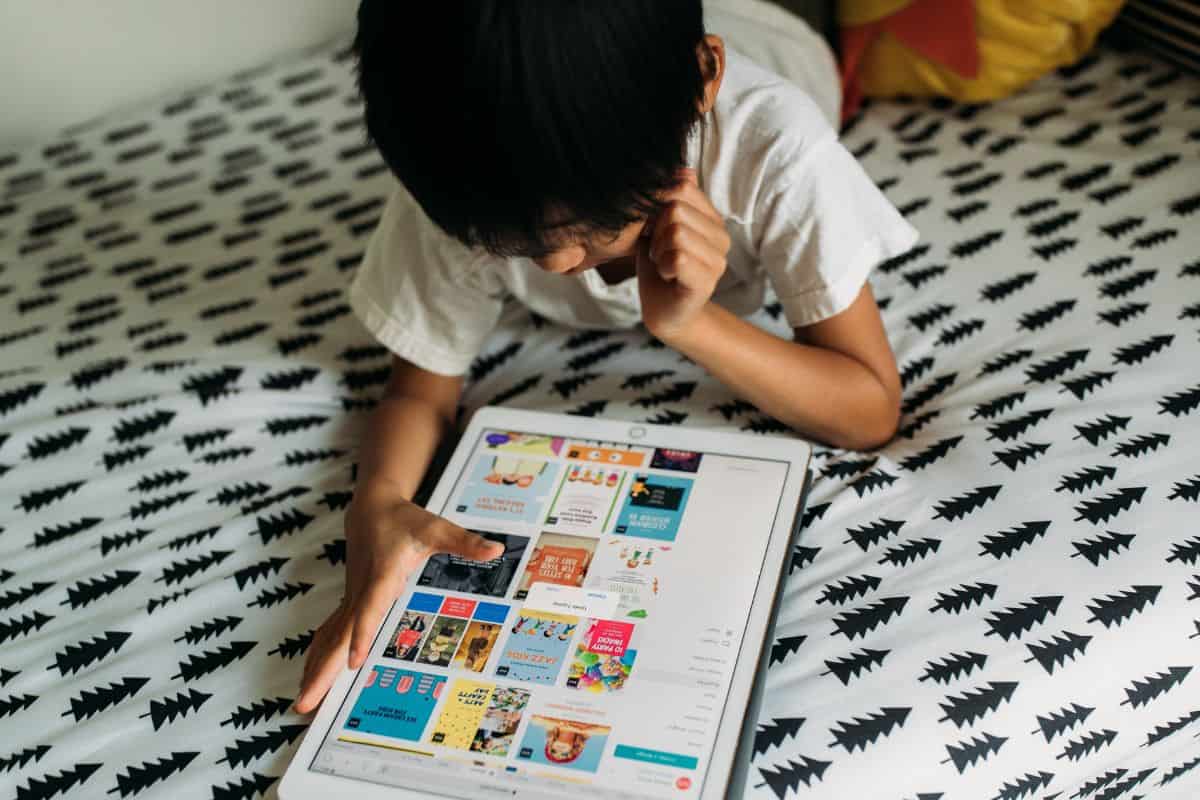
Moderation in all things
(including tech usage)
Instead of shunning technology and screens entirely, the key is moderation. Moderation allows children to enjoy the benefits of technology while still experiencing the physical, emotional, and social richness of the non-digital world. By letting our kids have screens in a responsible and mindful way, we can equip our children with the skills they need to navigate the digital landscape and, at the same time, cultivate their appreciation for the wonders of the world around them.
The call for moderation in screentime doesn’t mean rejecting technology but rather embracing it with a discerning eye. It’s about striking a balance that prioritizes outdoor activities, face-to-face interactions, and a variety of real-life experiences that nurture a child’s holistic development. Demonizing screens can actually make them more attractive to kids and doesn’t teach them how to use tech in responsible ways.
As we jump into this discussion, we’ll explore how to guide our young digital natives to use screens in ways that are not detrimental but empowering, enriching, and, above all, balanced.
How to turn tech into your ally
The key to using tech in a way that isn’t harmful to kids lies in how we, as parents and caregivers, guide our children to use technology responsibly. Screens are not inherently evil; instead, it’s our role to ensure that our children engage with them in a healthy and balanced way, finding a harmonious coexistence between screen time, outdoor adventures, and non-screen activities.
We have discovered a few ways to use technology as a catalyst for bringing children into nature, which we can’t wait to share with you today. From mobile apps that transform a simple walk in the park into a treasure hunt of biodiversity, to using tech to capture your outdoor adventures, this post will show you how to make technology your ally in nurturing a sense of wonder and discovery about the environment.

How our love of nature led us to YouTube
When the pandemic hit, I suddenly became more aware of the amount of time we were spending glued to our screens. Everything moved online, from school to work to birthday parties and happy hours. Screens were our gateway to our community, family, and friends. They helped us stay connected to what mattered most.
But as time went on and things went back to normal, our screen time consumption didn’t decrease as much as I thought it would. We’d found all new ways to use screens for new reasons, some of which were really interesting and educational, including kids programming on YouTube.
Trust me when I say that I understand that not all YouTube programming for kids is interesting or educational, but occasionally we’d find a hidden gem. I realized that my son was absorbed in various programs (some nature-based, others not so much), and fixated on the number of likes and subscribers they garnered. This sparked an idea!
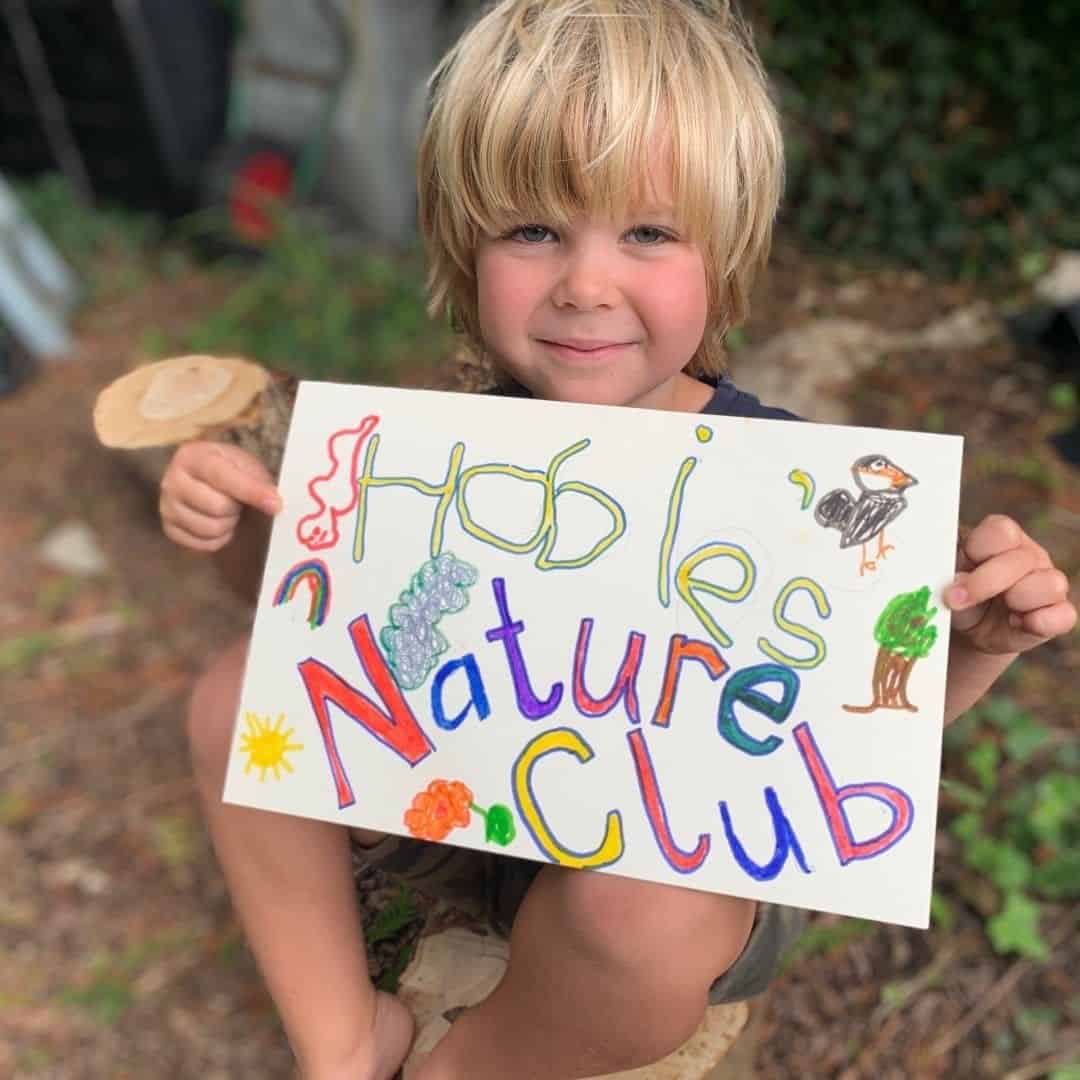
Creating your own YouTube show
We decided to create our own YouTube channel, with the goal to inspire parents and caregivers to spend more time outside with their children by showcasing fun and easy activities and crafts. We hoped that our channel would captivate viewers’ attention, enticing them to put down their screens (after watching), and get outside! We wanted to show kids how they could engage with a parent or caregiver and enjoy the boundless learning and fun that nature offers.
As a family, we’ve always had a love for the outdoors and nature. This felt like such a fun and inspiring project. This idea not only enhanced our family time together (as we were our crew and production team), but it also multiplied our outdoor adventures tenfold. We had content to create, which held us accountable for getting outside, trying new things, and adventuring together.
However, let me tell you that managing a YouTube channel is no easy task, especially with our busy lives. But we loved the challenge. Working together as a family unit, we brainstormed ideas and shared the entirety of our outdoor experience, making it an incredible and rewarding journey for all of us. We learned so much from our adventures and have so many amazing memories from the activities we did. Plus, now we have tangible physical evidence (in video) of our family time together, which I know we’ll look back on fondly for the rest of our lives.
Hobie’s Nature Club- watch here
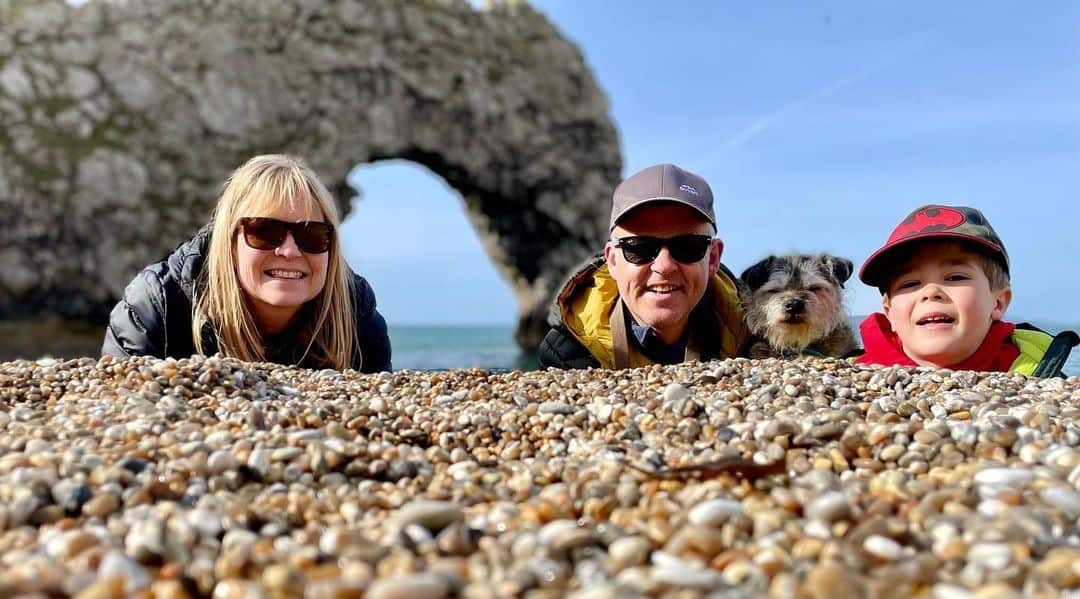
Skills learned through making our YouTube show
With our YouTube channel about outdoor activities and nature, our family (and particularly my son) all learned so many new skills. While I’m not saying that creating a YouTube channel is for everyone, don’t discount the experience and skills that the whole family can learn together.
First off, we all had to learn some technology-related skills. My partner was our videographer, but we all had a say in setting up the scene and getting the shots. We learned a lot about lighting, editing, filming, and production.
As for non-tech skills, we all had to work together to create engaging and informative content. We are by no means experts (either in nature or in tech), so one of the best parts about filming Hobie’s Nature Club was that we were all learning about nature together. We had to research our nearby nature, the outdoor activities in our area that we could film, come up with ideas on how to tie them to learning, look up crafts, and make the content educational (as well as fun and entertaining). Recording the videos helped my son build public speaking and presentation skills.
This diverse skill set extends beyond the digital realm. I feel like these skills will not only empower him in the world of technology, but also prepare him for a well-rounded education and equip him with some life skills that are invaluable in adulthood.
Outdoor discovery through apps
YouTube got us started thinking about all the other valuable ways that technology can be an educational resource, fostering creativity, curiosity, and engagement with the world. Moreover, various forms of technology (with and without screens), can be a great gateway for kids to outdoor exploration and learning about nature and the world around them. Technology can make it even more fun! When children learn to use technology as a tool for enhancing their understanding of the natural world, they’re more likely to use it in positive ways, and to venture outside, armed with a newfound sense of wonder and knowledge.
One of our favourite ways to incorporate technology into our outdoor activities is by utilising a variety of apps that encourage kids to step outside and explore the world around them. We’ve experimented with several apps and got some additional recommendations from the moms on the Run Wild My Child Creative Team.
Nature identification apps
Nature identification apps have revolutionized the way families connect with the natural world, fostering a deeper understanding of the environment. Whether it’s identifying a mysterious bird call, a vibrant wildflower, or a species of tree, these digital tools provide instant answers that transform nature walks into interactive learning experiences. Through these apps, children and parents alike can engage in a collective quest for knowledge, encouraging teamwork, and inciting curiosity and conversation as they explore the outdoors together. They encourage open dialogue and collaboration, with family members sharing their findings and observations, and often sparking discussions about the natural world and conservation.
Moreover, the thrill of making a new discovery or successfully identifying a species becomes a shared triumph, strengthening the emotional bonds within the family. In an age where screens often isolate individuals, nature identification apps have the power to reconnect families with nature and with each other, making outdoor excursions more memorable, interactive, and meaningful.
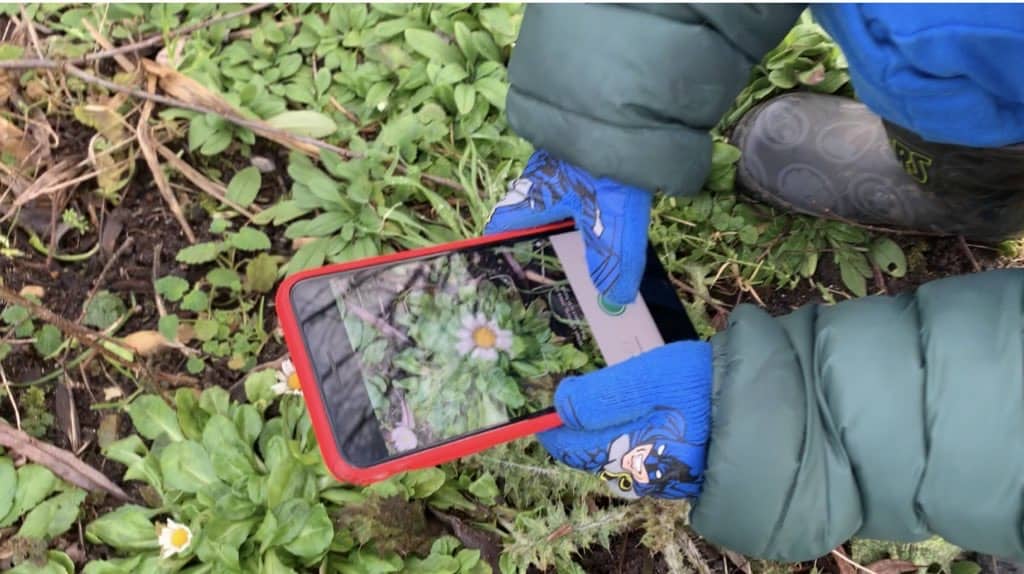
Best nature identification apps for kids
There are countless nature apps and digital field guides available that can help families identify local flora and fauna. These apps can turn a simple walk in the park into an educational adventure. Here are a few of our favorites:
iNaturalist – A wonderful free app to help you identify plants and animals around you through photos and track your discoveries.
PlantSnap / Leaf Snap– This is a free app that allows you to take photos of the leaf/plant/tree you are trying to identify and sends you through the options in a fun and interactive way.
Fossil Explorer- Natural History Museum– We are big dinosaur fans in our house and we love a day out fossil hunting. This app helps to identify likely fossil finds in your area and covers the whole world. It provides a treasure trove of information and pictures.
Picture This – Another free app that’s brilliant for capturing images of nature, plants, flowers, and insects and identifying them for you.
Bumblebee Conservation – This app isn’t as tech-savvy as the other apps (you can’t take photos), but through illustrations, it helps you identify different types of bees providing the different characteristics of each species of bee.
Picture Mushroom – This app is great for fall/spring exploration as this gives you the opportunity to photograph mushrooms and fungi and identify them for you. This is fab if you are into foraging, as it will detail whether it is edible or poisonous. (Never rely exclusively on an app to identify anything you may eat. Educate yourself on the item you’re foraging and always be 100% sure you’ve identified it correctly before consuming.)
Google Lens – An incredibly quick access to a wealth of knowledge regarding the things we’ve captured in photos.

1 TINKERING-DYI
Our Favourite Educational STEM Apps for IPad - Elementary to Adult
An IPad can be an incredible learning tool for students. Here we share
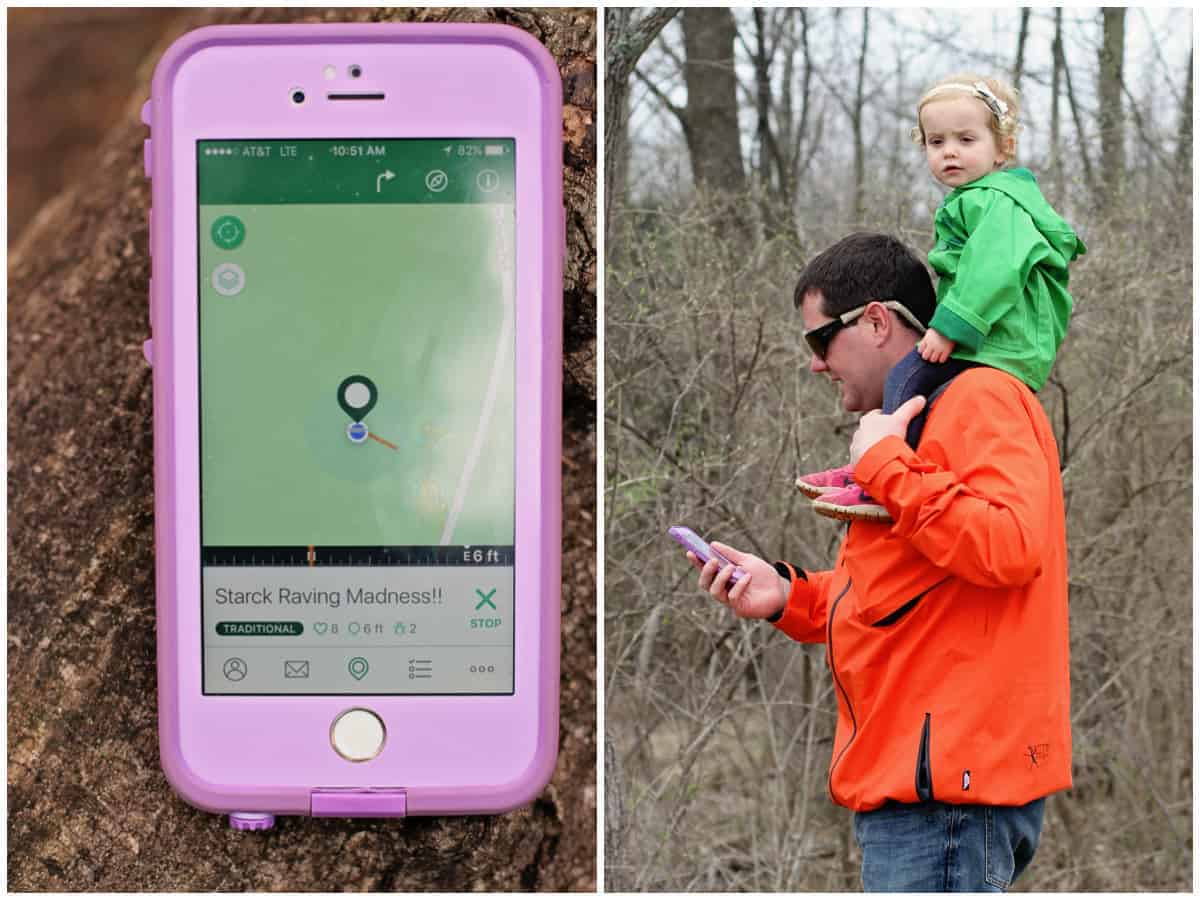
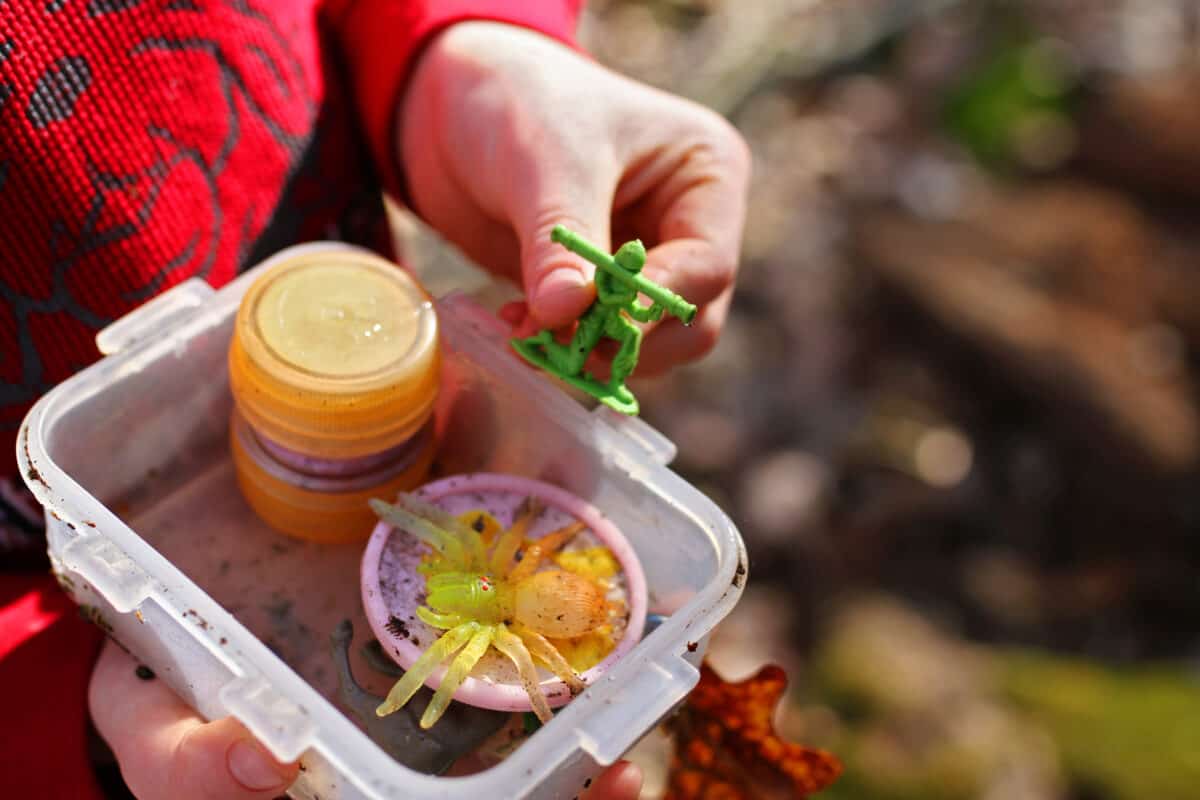
Geocaching
Geocaching combines technology, outdoor exploration, and good old-fashioned treasure hunting! By using the (free) geocaching app, families can use GPS-enabled devices or smartphone apps to search for hidden containers (geocaches) in various outdoor locations. Geocaches can be found all over the world and almost anywhere you can imagine. Geocachers usually hide caches in locations that are important to them, reflecting a special interest, memory, or skill of the cache owner. These locations can be quite diverse – from under a bench at your local park, behind a marker along a bike trail, in a fake rock at the botanical garden, or behind a false brick on the side of a building on a busy city street.
All your need to get started geocaching is a smartphone, a geocaching account (free), and a sense of adventure! Geocaches are everywhere, and it’s a great budget-friendly low-entry activity that’s great for everyone in the family! It’s a fun and interactive way to get outside and explore.
For more information, check out our full post: Beginner’s Guide to Geocaching with Kids
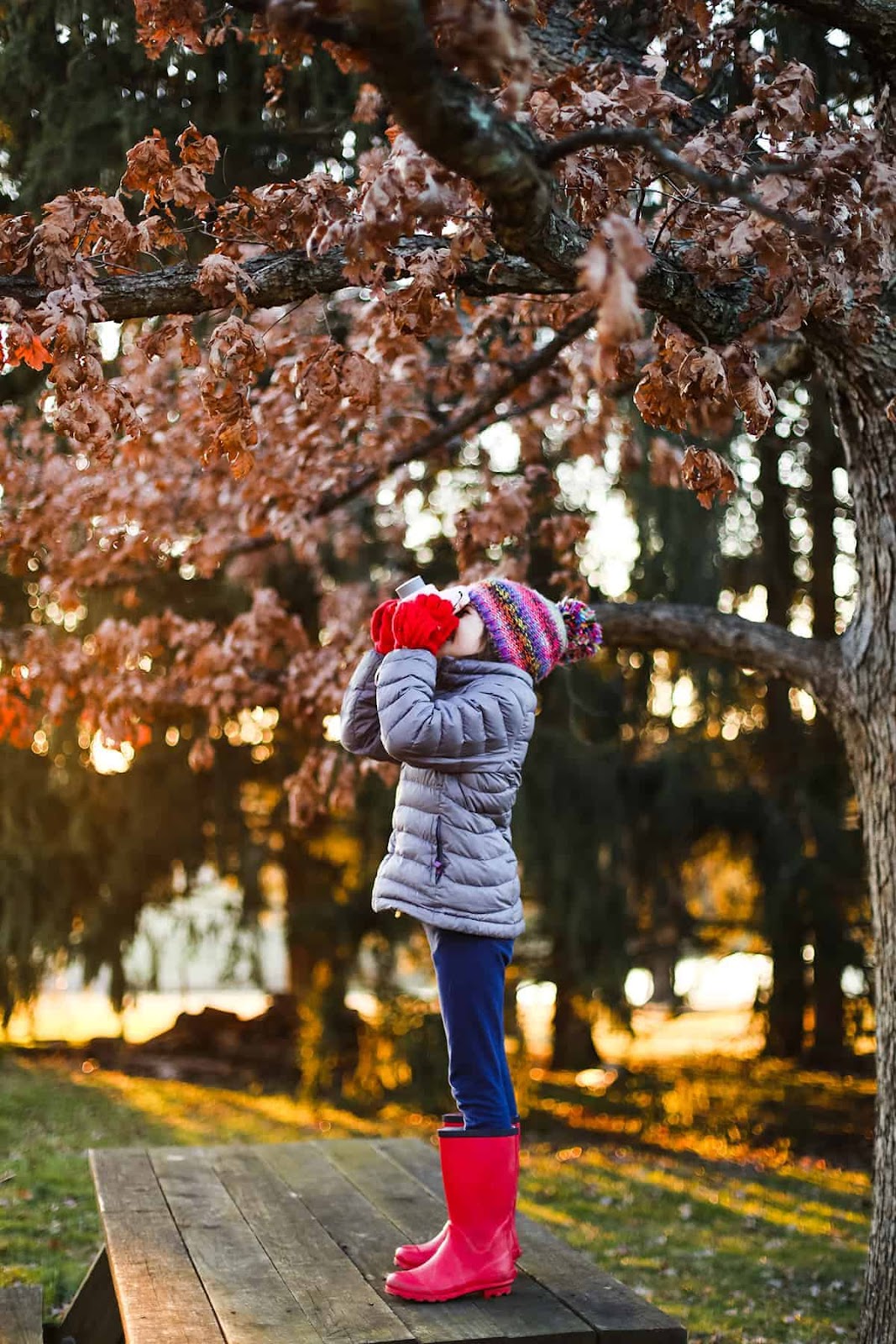
Capturing memories of outdoor adventures
Photography
Encouraging kids to use their smartphones or tablets (0r digital cameras) to capture the natural world around them is a creative and empowering way to enhance their outdoor experiences. This practice not only stimulates their connection with nature but also nurtures a range of skills and interests.
Kids can take photos of plants, animals, insects, and landscapes, adding written notes or voice recordings to a “digital nature journal” to describe what they’ve encountered on their outdoor adventures. This process encourages careful observation, attention to detail, and critical thinking, as they learn to identify and appreciate the nuances of the environment. Over time, their digital nature journal becomes a personalized record of their outdoor adventures, offering a sense of accomplishment and a means to track their evolving knowledge of the natural world.
Taking and editing photos taken during outdoor excursions is an excellent way to introduce kids to basic photography skills. By using photo editing apps, children can enhance their images, adjusting lighting, colors, and compositions to create stunning, artistic representations of the natural world. This creative process allows them to express their unique perspectives and feelings about nature, fostering their artistic sensibilities.
Video diary
This summer, my son decided to swap his pen and paper for an Apple Video app to capture his holiday memories. By taking video on a tablet and then using Apple Video to edit it all together to create a video recap of our trip, our young diarist elevated his vacation journaling to a whole new level. Rather than static words and images, his videos provide a window into his perspective of our trip, capturing the sights, sounds, and emotions of each moment he deemed video-worthy. He captured our trip from his perspective, which was really amazing for us (as parents) to see. With his narration and videos, the story truly comes alive, transporting the viewer to that magical place and time. It’s a powerful and wonderful way to document a trip or event that we’ll treasure for years.
Other great video editing apps are iMovie and InShot.
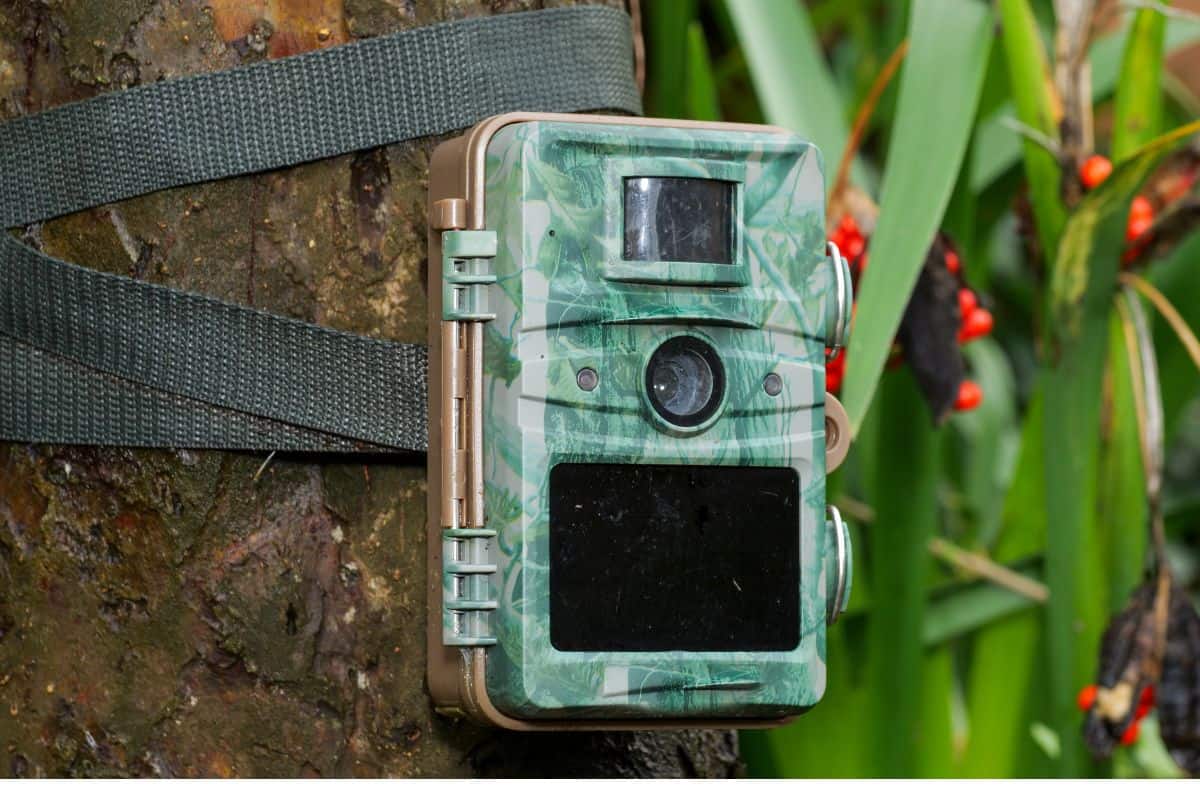
Using tech to observe wildlife
Trail cameras for capturing wildlife images
Setting up and using a trail camera is an exciting and educational way for kids to use technology to connect with the wildlife around them. This hands-on approach allows young naturalists to observe, track, and learn about the diverse creatures that share their outdoor environment. To begin, let your kids help select a suitable location for the trail camera, preferably near a known wildlife path or in an area with ample signs of animal activity. They’ll need to secure the camera to a tree or post and aim it at the desired target area. This setup process offers a valuable lesson in animal behavior, as children must consider where animals are likely to pass and how to remain discreet to avoid scaring them away.
Once the trail camera is in place, kids can eagerly await the results. As the camera captures photos or videos of passing wildlife, children can take on the role of amateur naturalists, carefully analyzing the footage to identify species, behaviors, and patterns. This process nurtures their observation skills and sharpens their knowledge of local wildlife. Additionally, the element of surprise and discovery that comes with checking the camera’s memory card creates a sense of anticipation and excitement, keeping kids engaged and enthusiastic about their wildlife-tracking endeavors.
Trail cams offer kids a glimpse into the world at night
Set up trail cameras to offer an excellent opportunity for children to experience wildlife in its natural habitat without disturbing or endangering the animals. Most trail cameras also work at night with a flash, giving you a glimpse into the nocturnal world and wildlife action. From mammals like foxes, deer, badgers, and hedgehogs to elusive night-dwelling birds and insects, the camera reveals the hidden world beyond our human perception. This footage can then be used to engage your children in discussions and inquiries about the animals they observe. Encourage them to research and identify different species, their behaviours, and how they adapt to the darkness.
This hands-on, technology-based approach enables them to connect with and appreciate the intricacies of the animal kingdom, fostering a love for nature and wildlife conservation. It’s a powerful tool for learning about ecosystems, animal behaviors, and the importance of coexisting with the natural world.

Telescopic lenses and pocket microscopes
Setting up a mobile phone with a telescopic lens or connecting your smartphone to a pocket microscope opens up a whole new world of wildlife (and nature) viewing possibilities, right outside your door.
Equipping your mobile phone with a telescopic lens makes bird identification easier and more accessible, especially for beginners. With the ability to capture clear, detailed photos of the avian visitors, you can refer to bird identification guides to identify the species with your children. This creates a fun and educational experience, encouraging curiosity and learning about the diverse range of birds that frequent your garden.
Using a pocket microscope in nature really helps your kids slow down and appreciate the intricacies and details of things you see every single day. You’ll literally stop to smell and see the roses (and all the other flowers along the trail as well). It also gives your kids invaluable and concrete STEM skills. But more than that, it nurtures their creativity, curiosity, and imagination. It instills a sense of wonder. The plethora of features to see on even the tiniest bit of nature is surprising. Hairs and pores dot leaves and insect legs, scales cover butterfly wings, jagged edges surround bits of sand, and minute creatures scurry in soil and pond water. Nature is amazing!
For more information, check out our full post on using a pocket microscope(which includes our top pocket microscope recommendations).
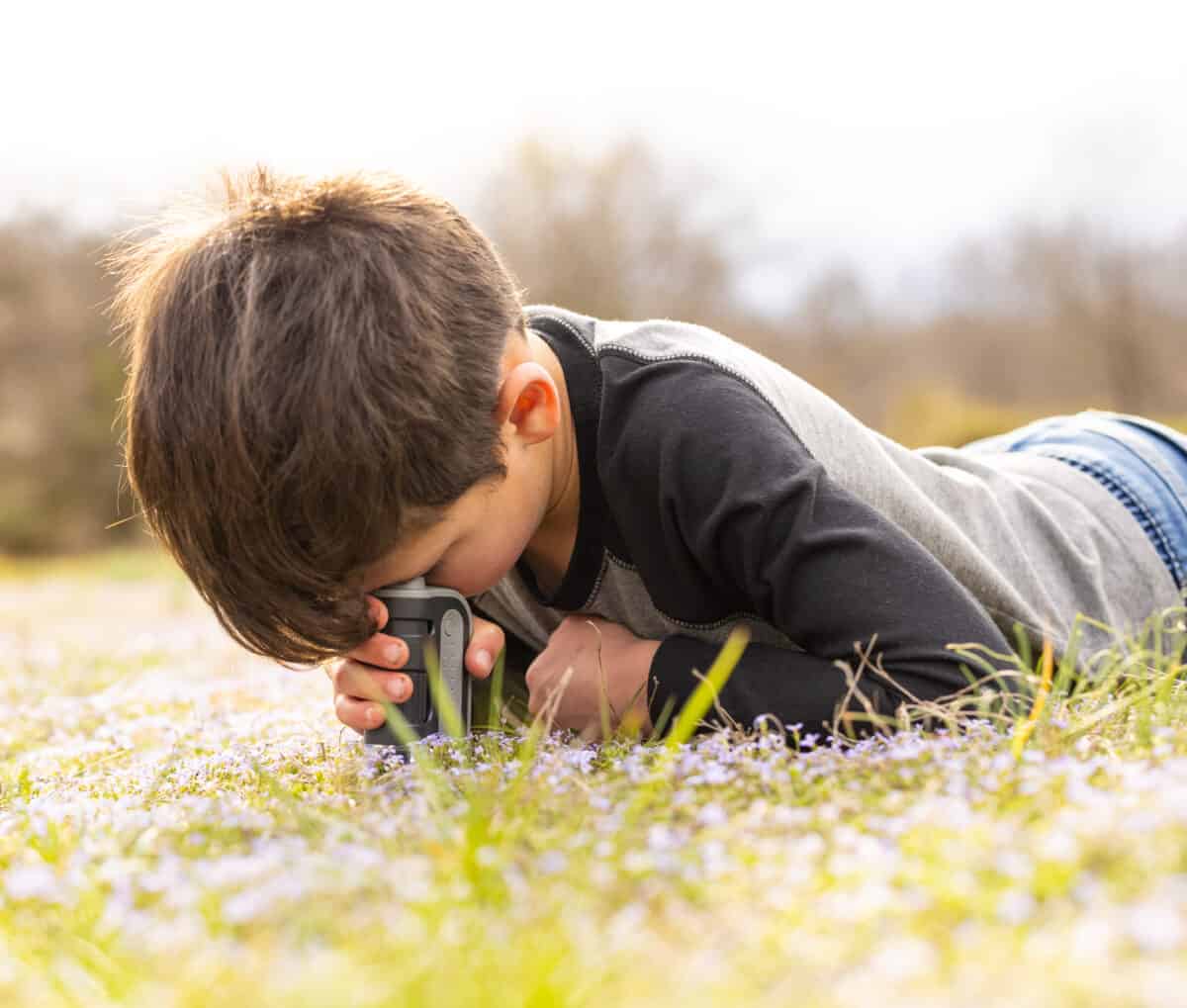
Screen-free
(but tech-enhanced) outdoor fun
When we send our kids outside to play, we hope they will use their imagination for hours. Endless hours of unstructured free play! It may sound counter-intuitive, but some technology can actually help with open-ended free play and give your children even more freedom to explore the world around them safely. Here are a few tech items that promote and encourage outdoor exploration and play.
Walkie-talkies
Walkie-talkies are more than tech gadgets; they become catalysts for camaraderie and shared excitement, fuelling a passion for the great outdoors. By equipping children with these handy communication devices, parents and guardians provide a means for kids to venture into the great outdoors while staying connected. This fosters a sense of independence, as kids can explore with confidence, knowing they can easily communicate with adults or friends. Whether on a hike in the woods, a camping trip, or simply playing in a large park, walkie-talkies not only enhance the outdoor adventure but also serve as an essential safety tool, ensuring that children can promptly reach out in case of emergencies or simply share their exciting discoveries, making outdoor exploration not only safer but more enjoyable and memorable.

GPS-enable devices
Another modern, trendy tech device is the GPS watch for kids. GPS-enabled devices and mobile apps can enhance safety during outdoor adventures. Parents can track their children’s whereabouts (giving parents peace of mind), while giving kids the opportunity to safely explore. Armed with parental knowledge of their whereabouts, children can fully immerse themselves in the beauty surrounding them, eagerly uncovering hidden gems and gaining a deeper appreciation for the natural world.
We have a Gabb watch and have been really happy with it. We can set up geofencing, call/text our child, and track GPS coordinates from our phones, without any social media access for him. It’s been a game-changer when it comes to letting him ride his bike around our community, to friends houses, or down the street to the fishing pond.
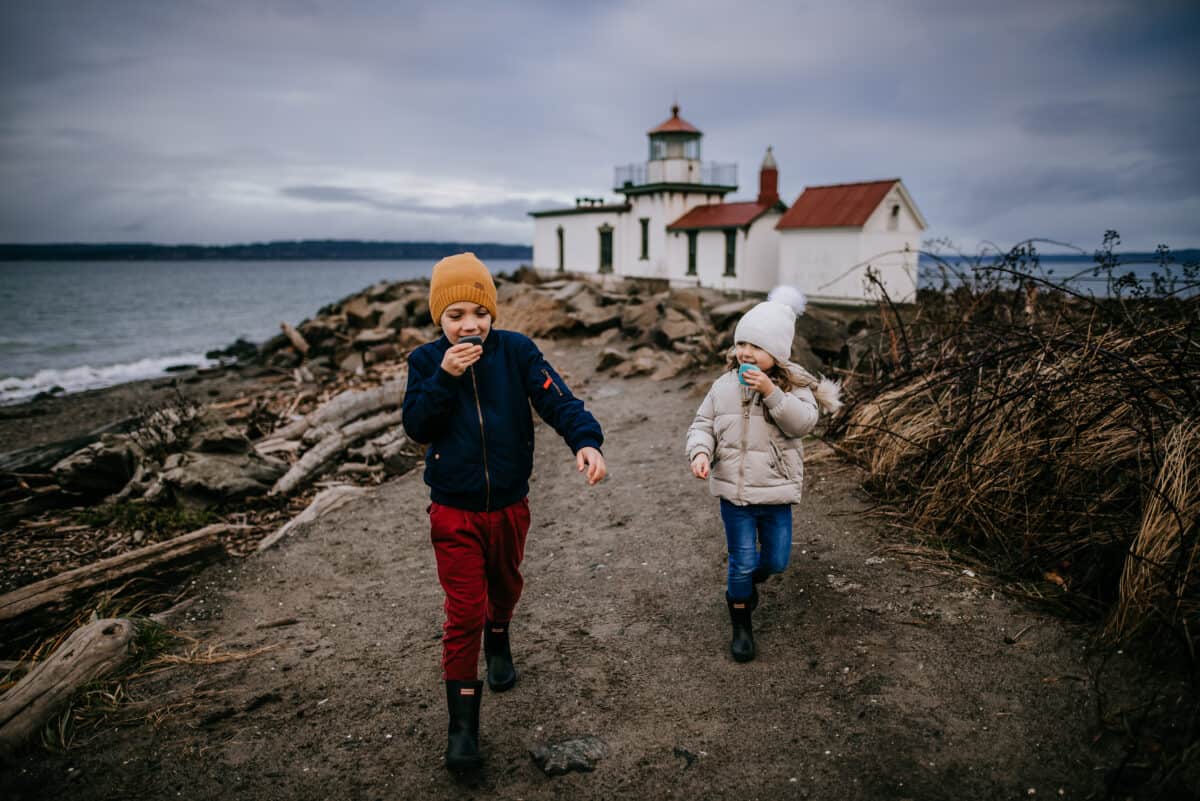
Metal detectors
Another fun tech device we have invested in to engage in exciting outdoor activities is a metal detector. Incorporating metal detectors offers a unique opportunity for children to discover hidden natural treasures right under their feet! From exploring beaches after stormy tides to scouring forest trails, the detectors can help kids find interesting geological specimens like fossils, minerals or even unique rocks. Whether searching in fields, parks or historic sites, there’s a chance to stumble upon artefacts like old coins, buttons or even relics from times gone by. These findings provide a gateway to learning about the country’s fascinating heritage, helping children develop a sense of connection to the land they explore.
Metal detecting can also serve as a tool to in-still a sense of environmental responsibility in children. Encourage them to leave no trace, respecting the natural surroundings they explore. Teaching them about the importance of conservation and responsible metal detecting practices helps preserve the integrity of the environments they love, ensuring these treasures are available for future generations to enjoy.
See my full post for more information on Metal Detecting with Kids.
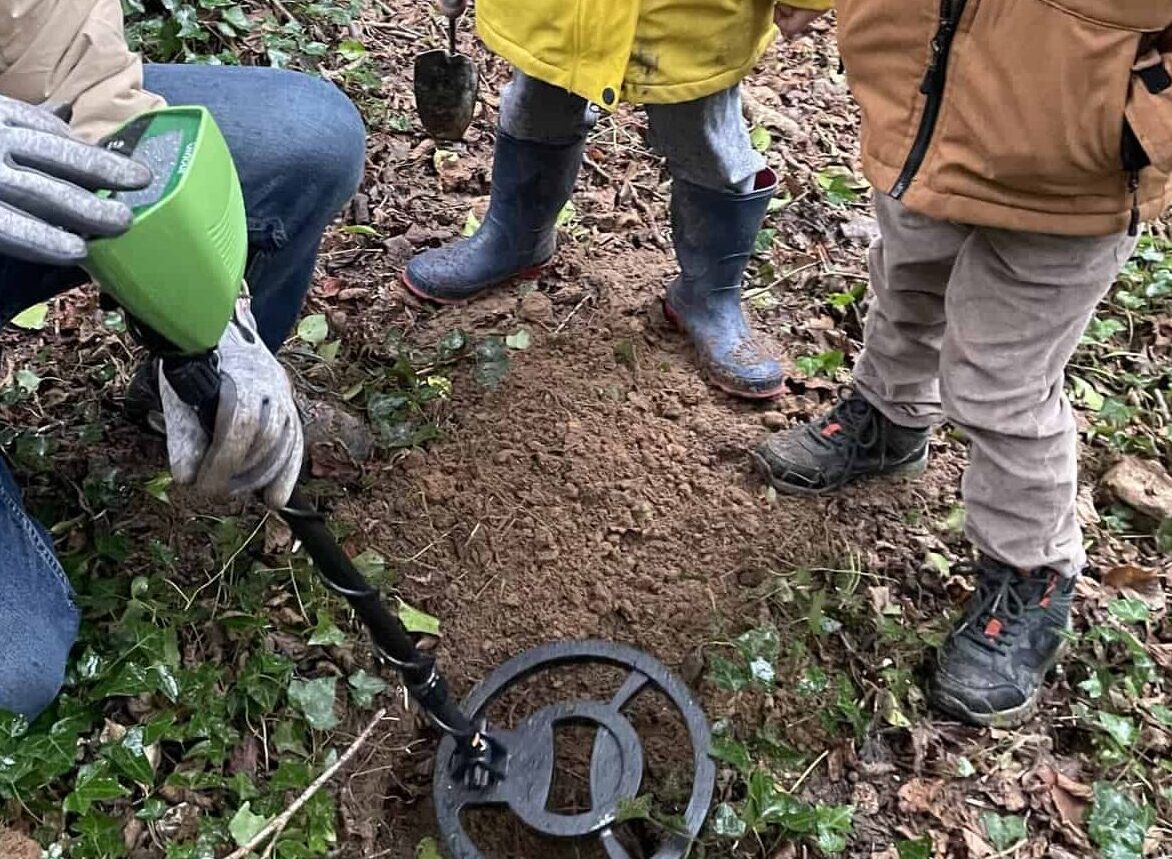
Using technology to get outside
It’s evident that technology, when used mindfully and in moderation, can be a powerful ally in encouraging kids to embrace the great outdoors and explore the world around them. Rather than vilifying screens as the root of all problems, we should recognize the immense potential they offer to spark children’s curiosity, enhance their learning, and enrich their lives.
By leveraging nature identification apps, encouraging outdoor photography and digital art, setting up trail cameras to track wildlife, and utilizing tools like walkie-talkies for safety, we can empower the next generation to connect with the natural world in meaningful and innovative ways. This harmonious balance between technology and nature not only deepens their appreciation for the environment but also equips them with a diverse skill set and instills lifelong values of exploration, conservation, and the joy of being outdoors.
As we embrace the digital age, let’s remember that screens are not the enemy; they’re a gateway to new adventures, new knowledge, and new connections with the world around us. By incorporating technology, we can equip our children with the knowledge and skills they need to navigate an increasingly digital future.
Let’s create a world where technology and nature walk hand in hand, guiding our children to be tech-savvy explorers of the great outdoors.
This website is under construction. This website is hand written and I and dyslexic so there will be little errors that I did not catch. I apologize.
This is a frequently asked question?
This is a FAQ description. Add more detail about this service, such as benefits, appearance, components and value
This is a frequently asked question?
This is a FAQ description. Add more detail about this service, such as benefits, appearance, components and value
This is a frequently asked question?
This is a FAQ description. Add more detail about this service, such as benefits, appearance, components and value
This is a frequently asked question?
This is a FAQ description. Add more detail about this service, such as benefits, appearance, components and value
